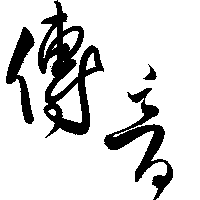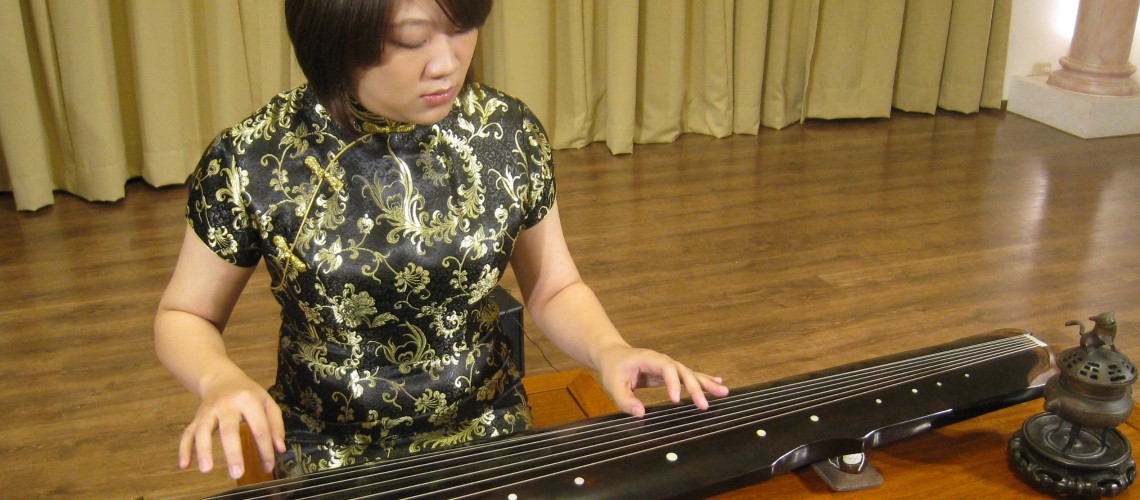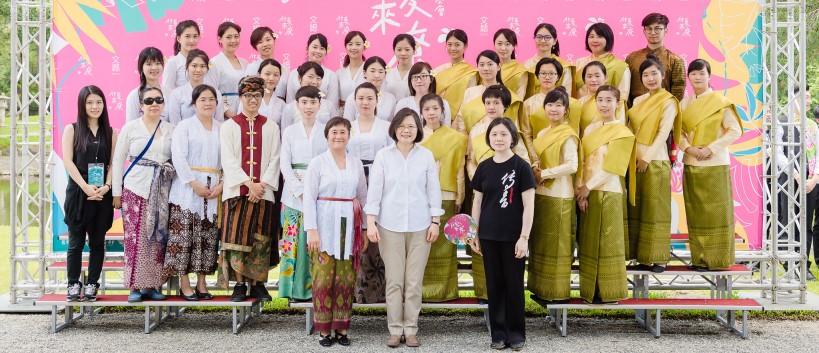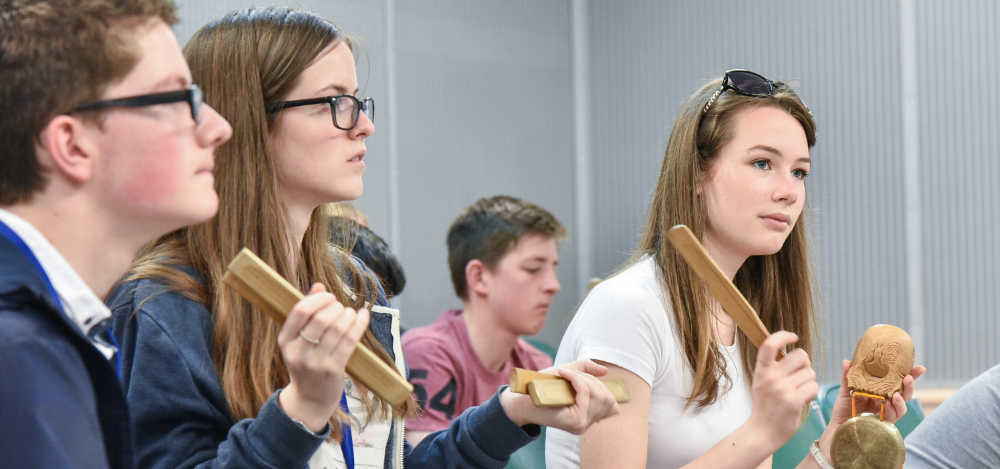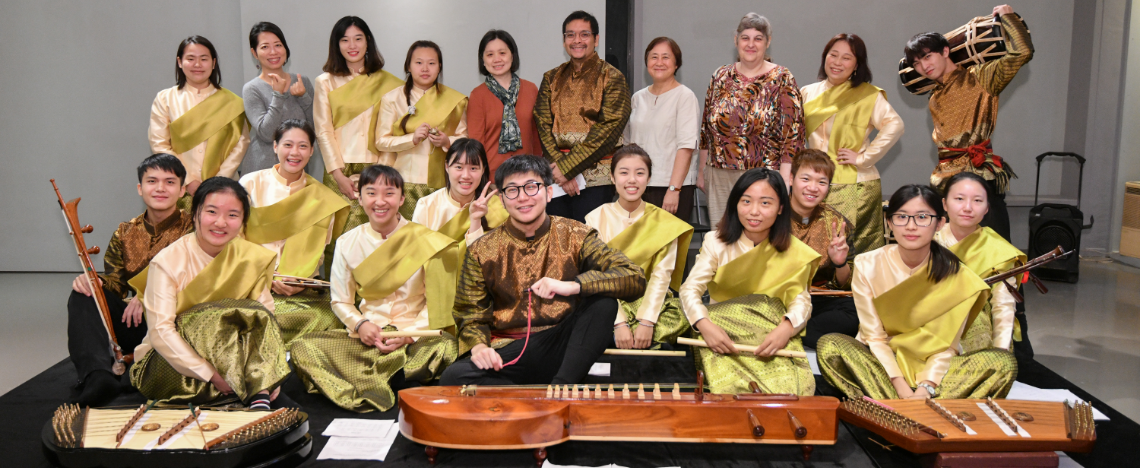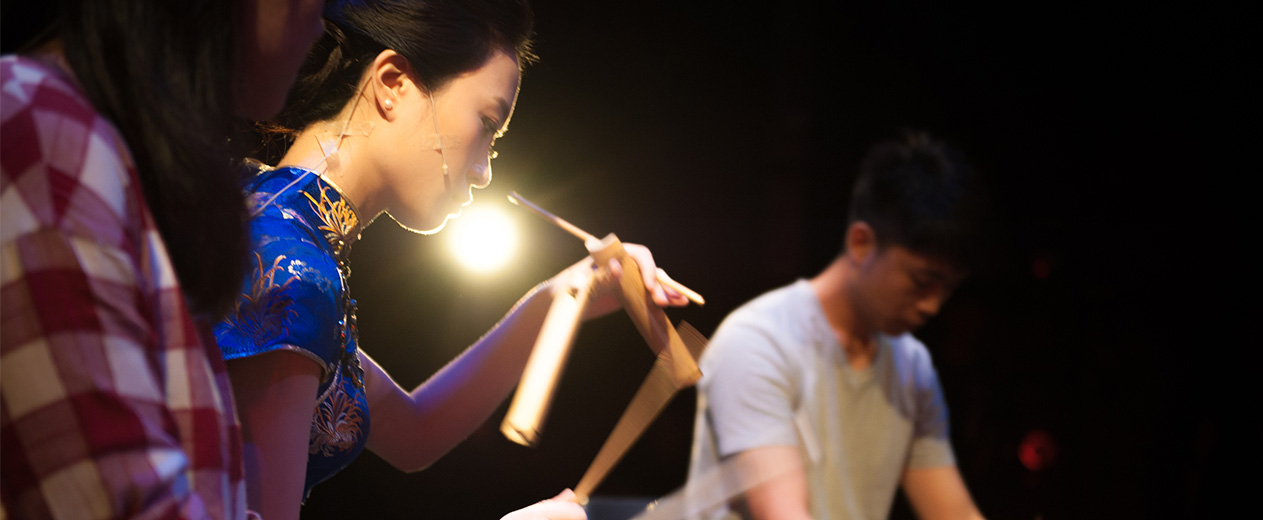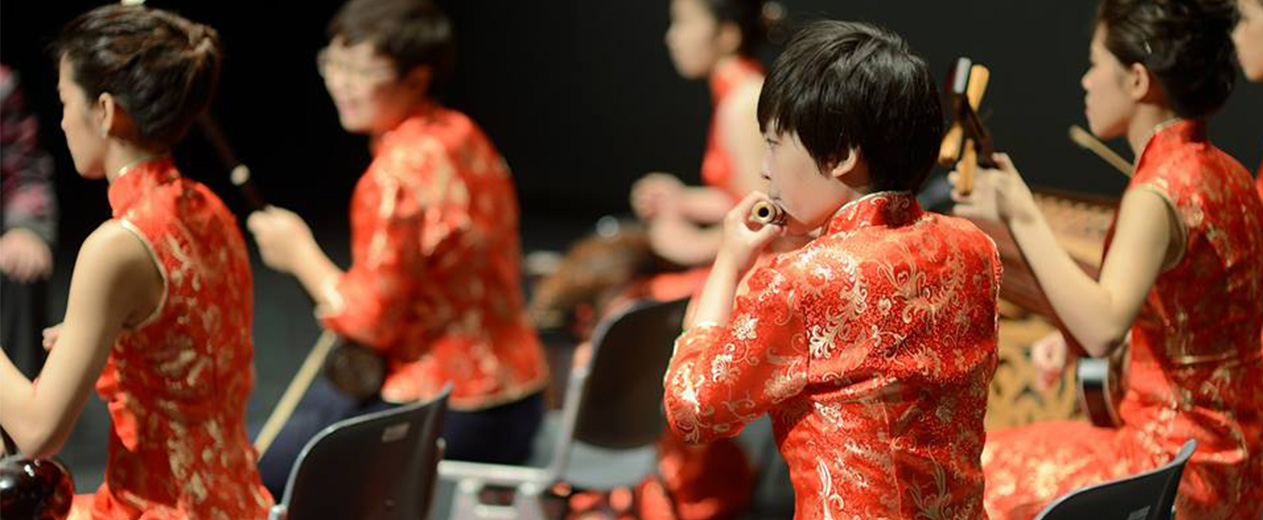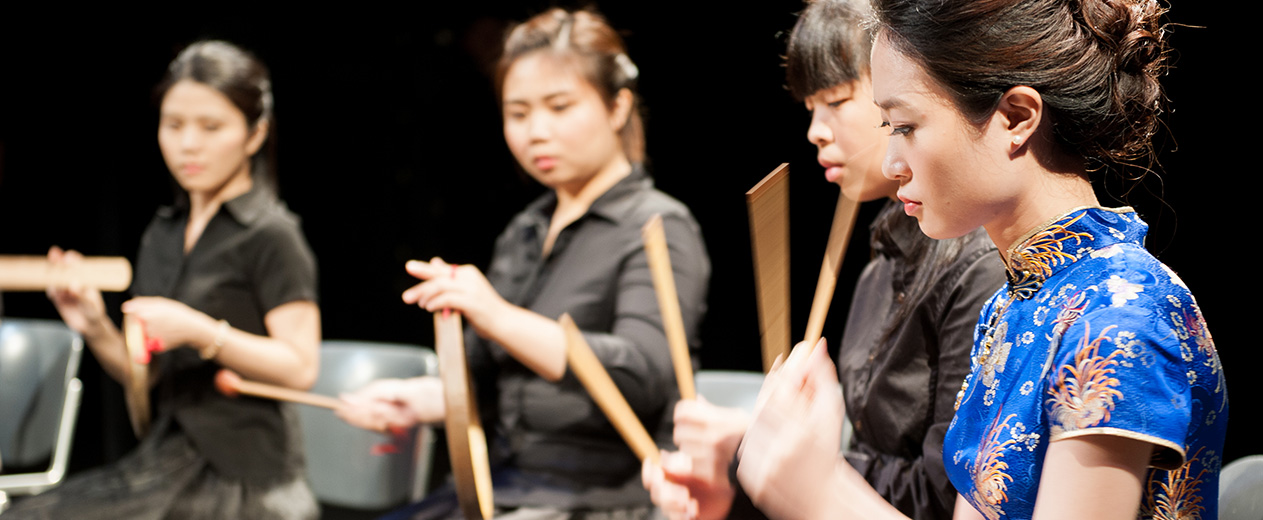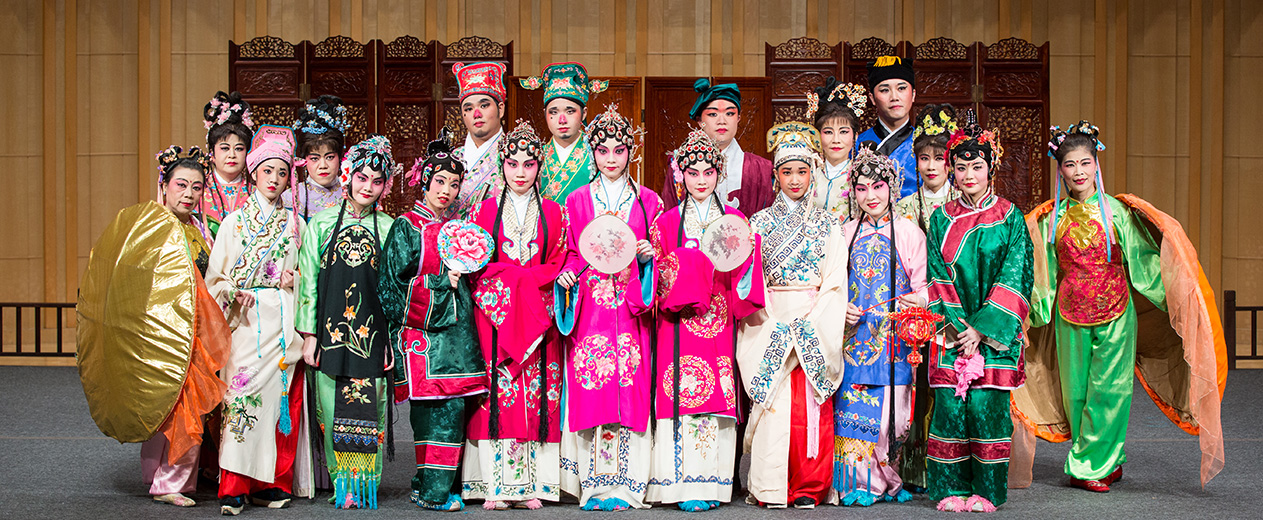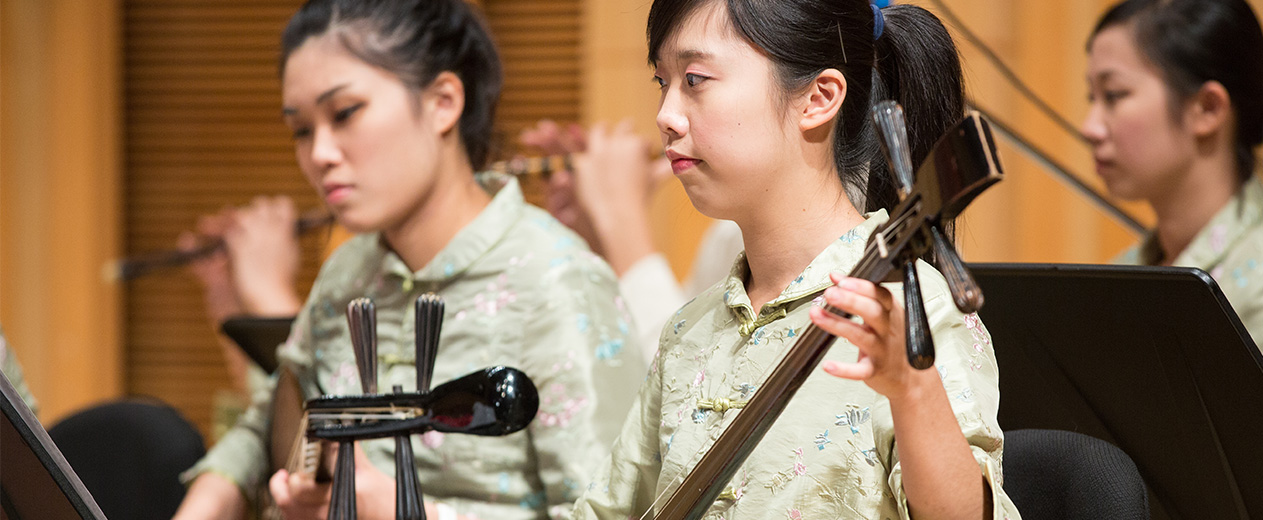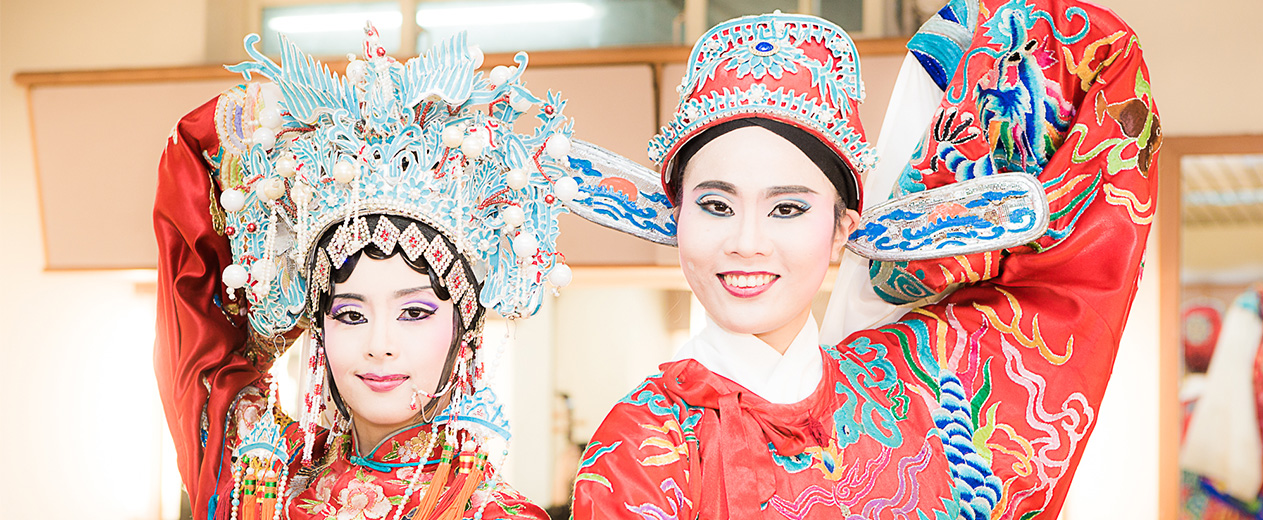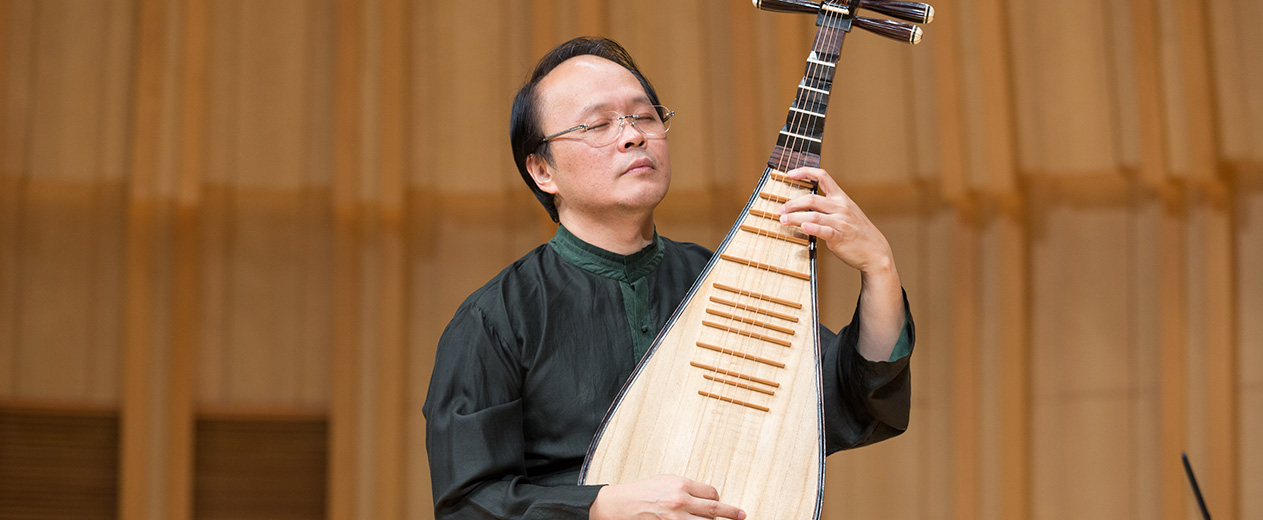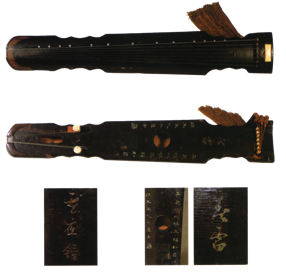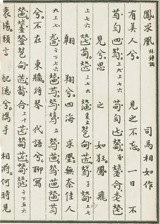View count:
24031
Guchin Focus
The Chhin (“Qin”), also referred to as the “seven-stringed zither,” is one of the most ancient musical instruments in China with a history of at least 3000 years or at most 5000 years according to ancient documents.
There are two stories about the origin of the Chhin. One claims that it was invented by Fu Hsi (“伏羲”), the first of the three mythical sovereigns of ancient China. He was also a cultural hero with the reputation of being the inventor of writing, fishing, and trapping. The Book of Chhin (琴書, author and date unknown) states: "Fu Hsi truncated the Tung oil tree to make the Chhin." Chhin Melodies (琴操, by Tsai Yong蔡邕, 133-192) asserts that, "Fu Hsi made the Chhin to practice morals and cultivate the soul and to return to simplicity." The “Musical Annals" of Records of the Great Historian (史記.樂書, by Si-Ma Chien司馬遷, 104-91BC) declares that Shun (舜, one of the five mythical emperors of ancient China) made the five-stringed Chhin to sing the songs of South Breeze. The School Sayings of Confucius (孔子家語, an early Han period collection of parables centering around Confucius and his disciples) also attests: "Shun played Chhin of five strings and sang the lyrics of South Breeze." Thus, it can be accepted that the timeline of Shun coheres with five-stringed Chhins. The names of the strings are: Gong (宮), Shang (商), Jueh (角), Ji (徵), and Yu (羽).
There are two stories about the origin of the Chhin. One claims that it was invented by Fu Hsi (“伏羲”), the first of the three mythical sovereigns of ancient China. He was also a cultural hero with the reputation of being the inventor of writing, fishing, and trapping. The Book of Chhin (琴書, author and date unknown) states: "Fu Hsi truncated the Tung oil tree to make the Chhin." Chhin Melodies (琴操, by Tsai Yong蔡邕, 133-192) asserts that, "Fu Hsi made the Chhin to practice morals and cultivate the soul and to return to simplicity." The “Musical Annals" of Records of the Great Historian (史記.樂書, by Si-Ma Chien司馬遷, 104-91BC) declares that Shun (舜, one of the five mythical emperors of ancient China) made the five-stringed Chhin to sing the songs of South Breeze. The School Sayings of Confucius (孔子家語, an early Han period collection of parables centering around Confucius and his disciples) also attests: "Shun played Chhin of five strings and sang the lyrics of South Breeze." Thus, it can be accepted that the timeline of Shun coheres with five-stringed Chhins. The names of the strings are: Gong (宮), Shang (商), Jueh (角), Ji (徵), and Yu (羽).
Chhin construction
The Chhin consists of three parts: the surface, the bottom and the hollow space between these two. Parts are glued together to become the “bed of the Chhin;” it is usually somewhat wider at one end with the other end being narrower. The surface is made from a Tung oil tree, and the bottom is made from Chinese Catalpa. The entire Chhin is lacquered with both ends enchased with hardwood to support the strings. There are 13 studs inlaid (“Hui”, 徽) on the surface, and two rectangular holes in the bottom for resonance.
The Chhin consists of three parts: the surface, the bottom and the hollow space between these two. Parts are glued together to become the “bed of the Chhin;” it is usually somewhat wider at one end with the other end being narrower. The surface is made from a Tung oil tree, and the bottom is made from Chinese Catalpa. The entire Chhin is lacquered with both ends enchased with hardwood to support the strings. There are 13 studs inlaid (“Hui”, 徽) on the surface, and two rectangular holes in the bottom for resonance.
Tone Color
The Chhin can produce three tone colors: the sound of an open string, a stopped-pitched sound and harmonics.
Range
The Chhin has a range of four octaves plus a major second. There are seven open-string tones on the seven strings, 91 harmonics and 147 stopped pitches.
Temperament
The temperament used on Chhin is a mixture of just intonation and tuning by fifths (三分損益律).
The Chhin can produce three tone colors: the sound of an open string, a stopped-pitched sound and harmonics.
Range
The Chhin has a range of four octaves plus a major second. There are seven open-string tones on the seven strings, 91 harmonics and 147 stopped pitches.
Temperament
The temperament used on Chhin is a mixture of just intonation and tuning by fifths (三分損益律).
|
Notation
Character Notation (文字譜) Notation used for the Chhin used to be fingerings written out in full sentences in the order of left hand to right hand. An example of this type of sentence is "with the thumb (of the left hand) stopping the second string about one tsun (about 2.4 cm) over the eighth inlay, the index finger (of the right hand) plucks the second string inwards, and the thumb (of the left hand) immediately returns to the eighth inlay."(“大指當八上一寸許案羽 食指打羽 大指即退至八”) “Jieshi Diao You Lan” (碣石調幽蘭, "Elegant Orchid" in the Jieshi Mode) is the only known tablature in this notation and was notated in 684-714 AD. |
|
|
Abbreviated Character Notation (減字譜)
The Character Notation was later condensed into a single compound character. This system recorded only the action of the fingers, the string to be plucked and the inlay (where to stop the string) leaving out pitch and rhythm. It is said that Tsao Rou (曹柔, 730-? AD), a famous Chhin scholar of the Tang Dynasty, made this change. Taking the first and fourth character in “A Male Phoenix Seeking for Its Mate” (“鳳求凰”) for example:  The upper part represents left hand fingerings, and the lower part represents right hand fingerings. This character means “open string” (“廾” is part of the character “散”, meaning open string), the second string (“二”) plucked inwards by middle finger (“勾”).”  “With the ring finger of the left hand (the character “夕” represents “無名指") stopping the tenth inlay (“十”徽), the second string (“二”) plucked inwards by the middle finger of the right hand (the character “ㄅ” represents “勾”).” |
|
Bibliography:
Chen, Wan-Nai. 1997 “Chhin and Zheng,” National Palace Museum Monthly, Vol. 175, p19.
Chen, Wan-Nai. 1997 “Chhin and Zheng,” National Palace Museum Monthly, Vol. 175, p19.


